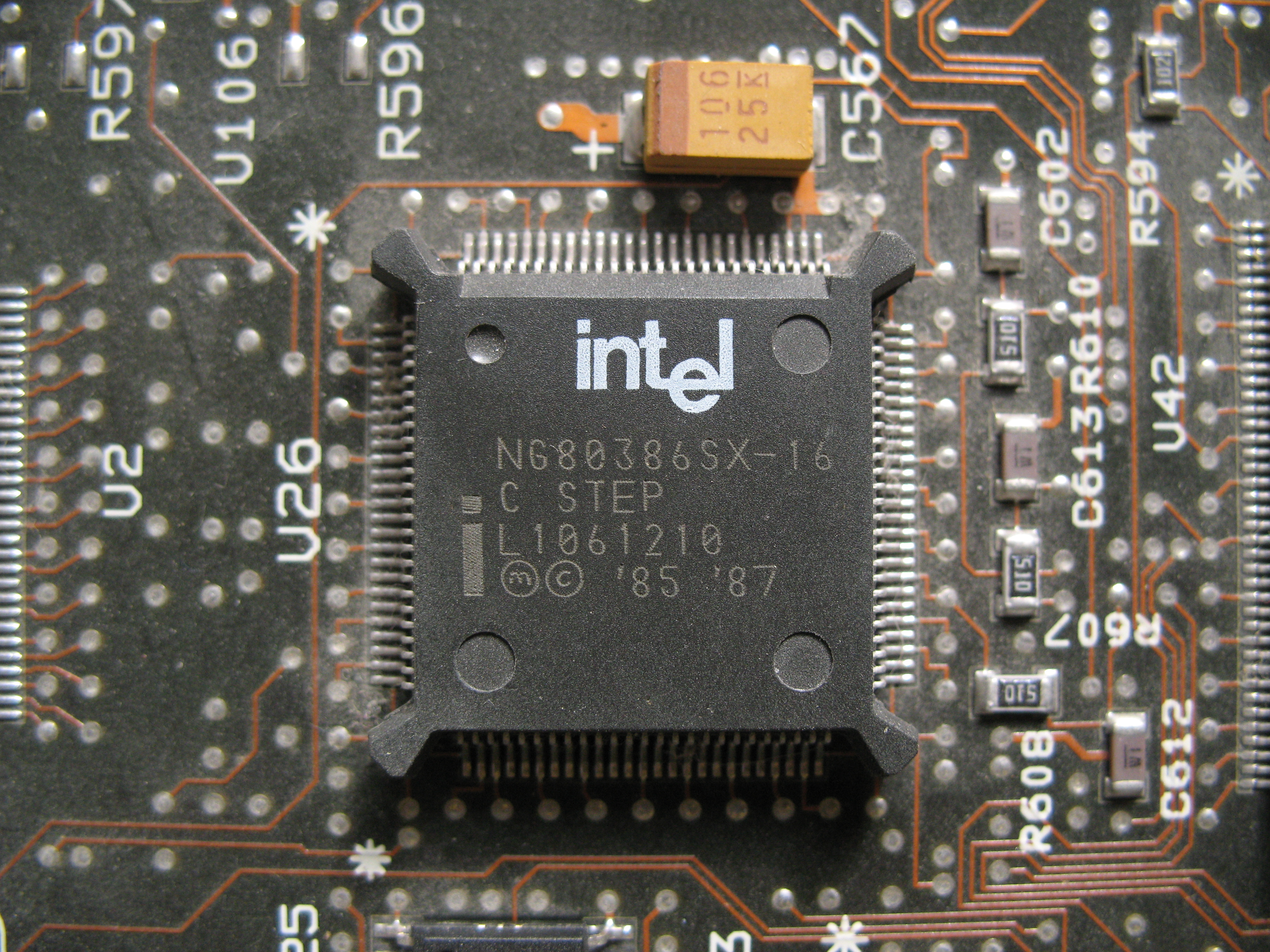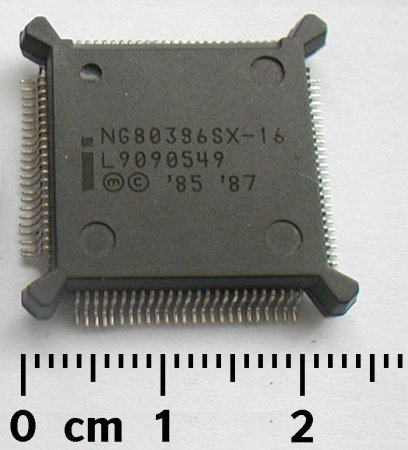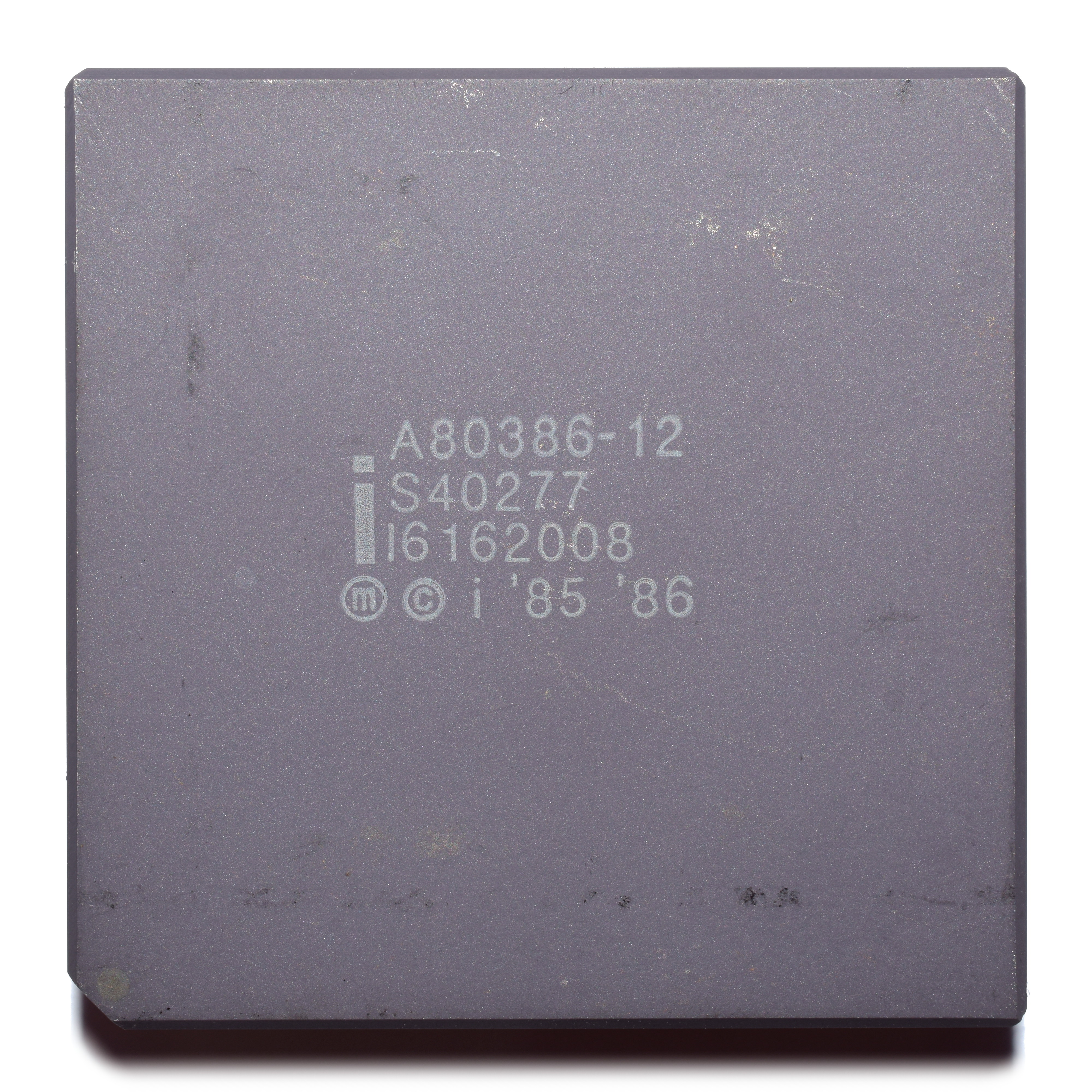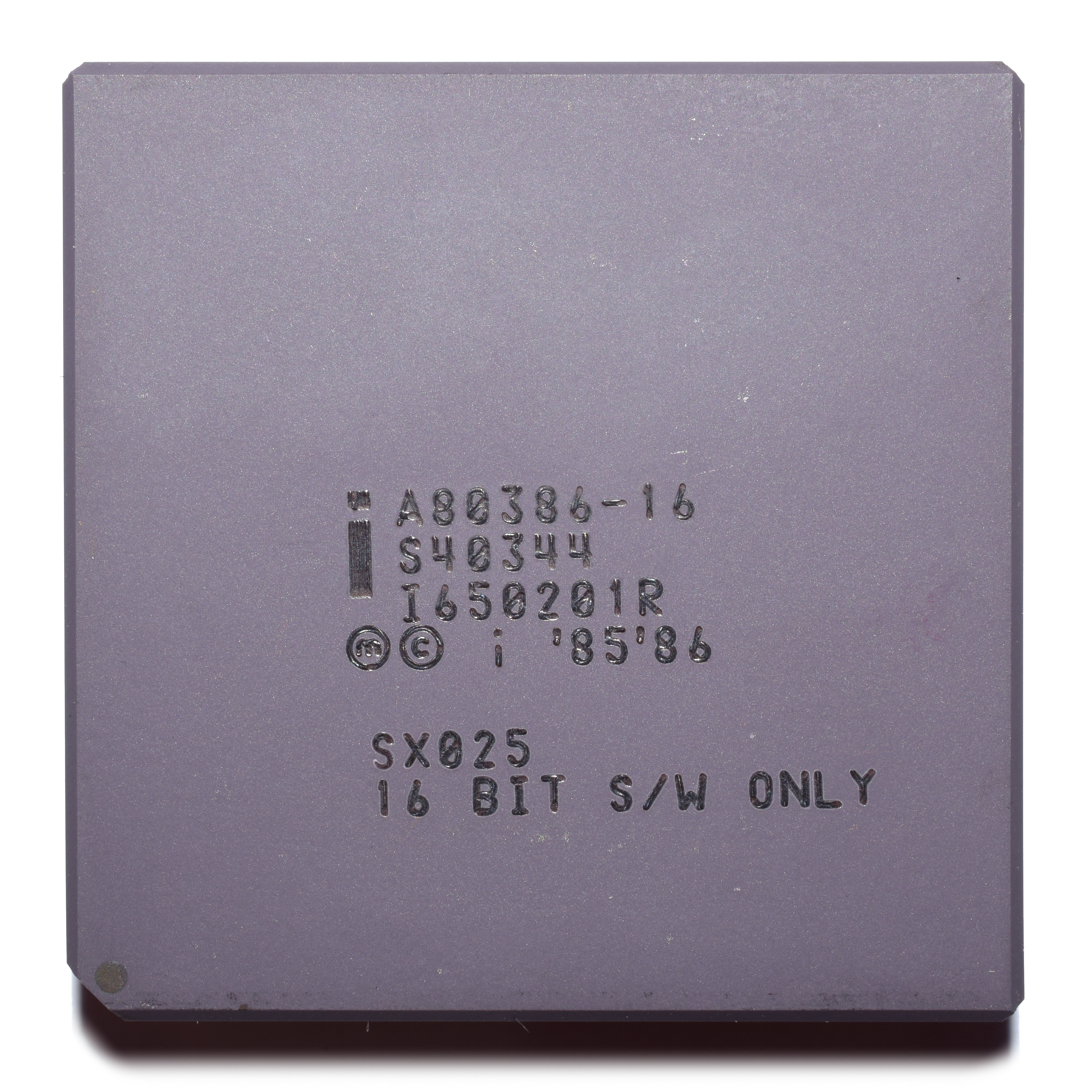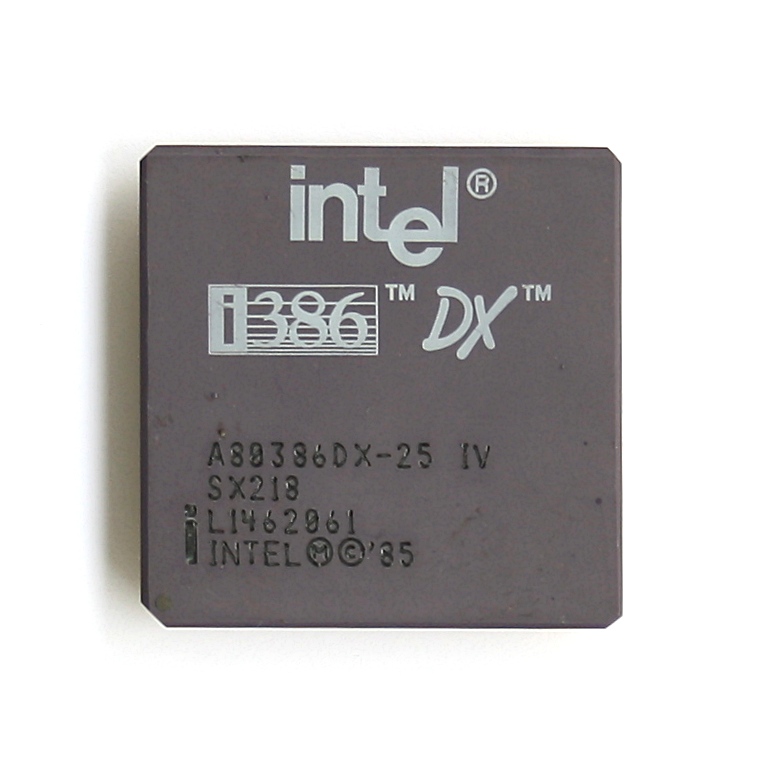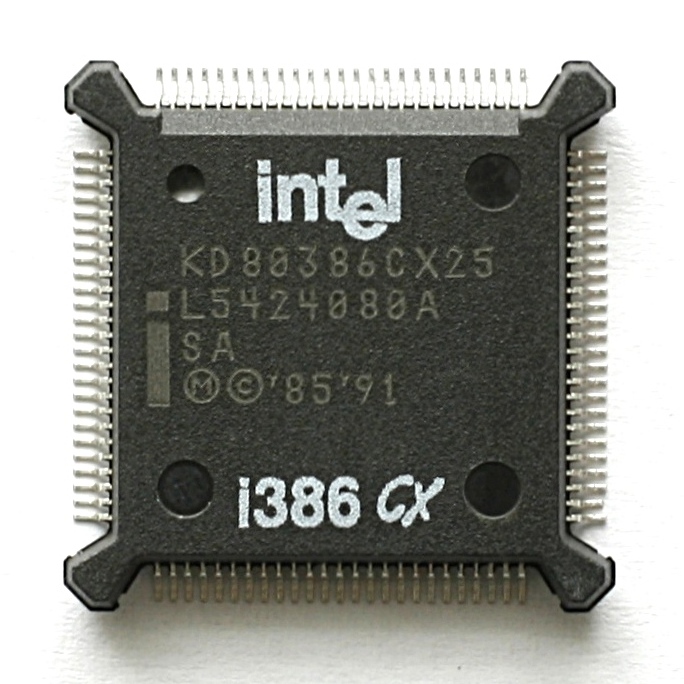Intel 80386 (Microprocessor)
Enlarge text Shrink text- Work cat.: Murray, W.H. 80386/80286 assembly language programming, 1986.
The Intel 386, originally released as the 80386 and later renamed i386, is the third-generation x86 architecture microprocessor from Intel. It was the first 32-bit processor in the line, making it a significant evolution in the x86 architecture. Pre-production samples of the 386 were released to select developers in 1985, while mass production commenced in 1986. The 386 was the central processing unit (CPU) of many workstations and high-end personal computers of the time. The 386 began to fall out of public use starting with the release of the i486 processor in 1989, while in embedded systems the 386 remained in widespread use until Intel finally discontinued it in 2007. Compared to its predecessor the Intel 80286 ("286"), the 80386 added a three-stage instruction pipeline which it brings up to total of 6-stage instruction pipeline, extended the architecture from 16-bits to 32-bits, and added an on-chip memory management unit. This paging translation unit made it much easier to implement operating systems that used virtual memory. It also offered support for register debugging. The 386 featured three operating modes: real mode, protected mode and virtual mode. The protected mode, which debuted in the 286, was extended to allow the 386 to address up to 4 GB of memory. With the addition of segmented addressing system, it can expand up to 64 terabytes of virtual memory. The all new virtual 8086 mode (or VM86) made it possible to run one or more real mode programs in a protected environment, although some programs were not compatible. The 32-bit i386 can correctly execute most code intended for the earlier 16-bit processors such as 8086 and 80286 that were ubiquitous in early PCs. As the original implementation of the 32-bit extension of the 80286 architecture, the i386 instruction set, programming model, and binary encodings are still the common denominator for all 32-bit x86 processors, which is termed the i386 architecture, x86, or IA-32, depending on context. Over the years, successively newer implementations of the same architecture have become several hundreds of times faster than the original 80386 (and thousands of times faster than the 8086).
Read more on Wikipedia >
 Topic
Topic




